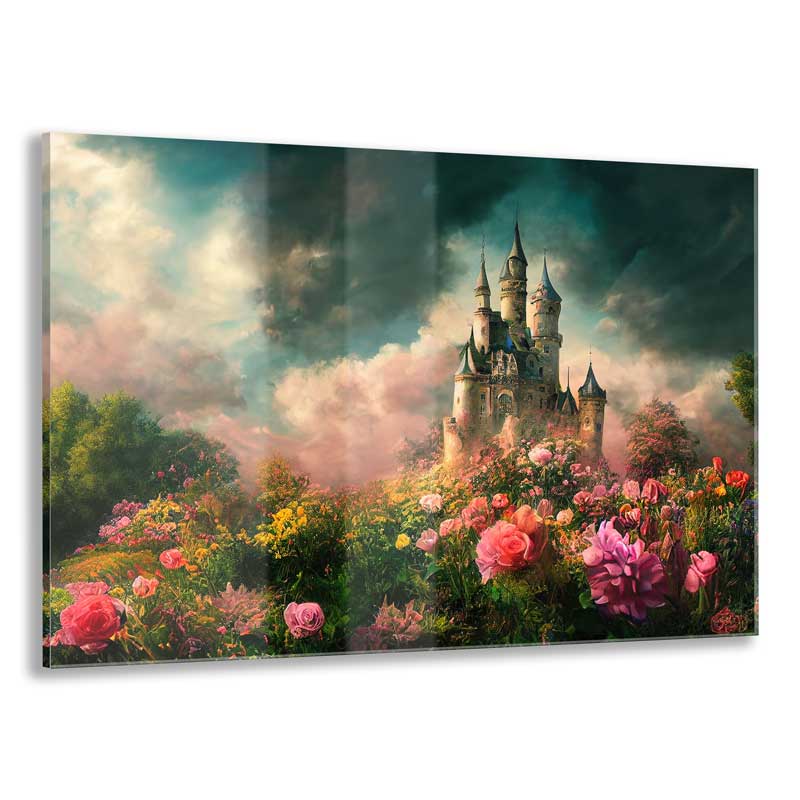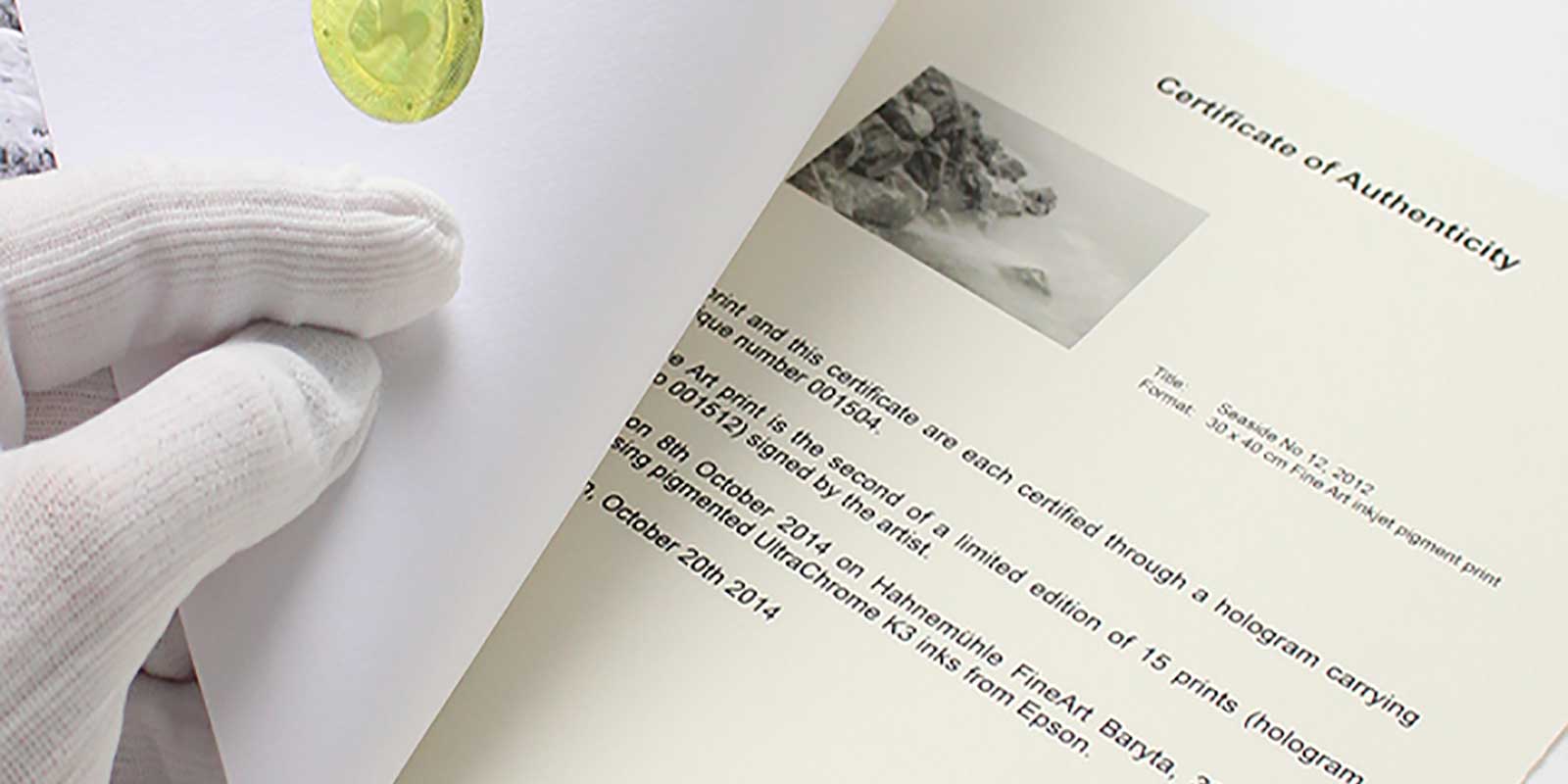If you are going to be selling your art as prints or already have been doing so, are you also offering a Certificates of Authenticity (COA) to your buyers?
This is a topic that comes up quite often when we visit with artists and photographers over phone or even in person. Two questions are asked. The first is how do I have those made and what goes on them.
Ways to Make Your Certificate’s of Authenticity
We have seen all manners of COAs from simple and basic signed copy paper with some information about the print to more elaborate printed on fine art papers normally used for the prints themselves.
If you are wanting to make your own, come up with a design that you think will work for you. It is then just a matter of designing it in something like MS Word or other word processor and printing them out on certificate paper which you can purchase at any office supply store. And if office certificate paper is not going to work for you, I have seen a number of COAs that simply use a plain paper with official letterhead of the artist or their gallery (if they have one).
For a more high end approach one option you might want to look at is FinerWorks’ COA kits that can be ordered in singles or by the box (25). We have extensive instructions and even a template example that you can use. This will help you not only come up with an elegant COA for your prints but even provide a means to register them. To learn more and order these kits, visit the FinerWorks COA Kit Page.
As an example as to how these kits work, checkout the video below.
Things to List on a Certificate of Authenticity for Prints
Artists, photographers and even print-makers vary extensively in what they list on the certificate, therefore leading to different expectations by artists. Based on the fact there is a wide variation I am going to present you a list of the common fields of data I have seen listed. By all means try not to list all, but only a handful that you thing are the most important to you. If you are working with a gallery, and they require you to come up with your own, of course find out from them what they will require.
Registry ID
This is the ID number of the print and is printed on the COA. Some publishers that produce prints may use a sku, serial number of reference ID number for that print.
Title This is the title of either the print or original work of art it represents
Artist First Name or Initial Self Explanatory
Artist Middle Name or Initial Self Explanatory
Artist Last Name Self Explanatory
Sheet Size Sometimes referred to as the “Paper Size”. This is the actual dimensions of the print including any handling margins. If the print is mounted, this specifies the size of the facing portion of the canvas as well as any part of the substrate that might wrap around.
Printed Image Size This is the dimensions of what is printed on the sheet.
Edition Name If an artist wants to label their print as part of an edition, this is usually what they put here. If it is an open edition or single edition then you may not want to just indicate “Open” or “Single Edition”. If you are going to sign the print, it is advisable to indicate here that it is signed.
Total Number in Edition This reflects how many prints are available within this edition. If 24 copies are made, then the edition would contain 24 as the total number. If a print is listed as 21 of 24 then you are indicating this print is number 21 of 24 in the series. Many artists will also include this number either in the corner of the print along with their signature.
Assigned Number If the print has a number, then this is what print number this reflects. Example, if 24 are printed and this is number 21 would mean the print’s assigned number is 21. If the print does not have an assigned number, then it should be labeled as open edition or single edition.
Number of Proofs Obviously if you are using FinerWork to produce your prints you will be doing your own proofing. Although not required, it is a good idea to have produced at least one print as an artist proof so that you know what your artwork will look like before you start having it shipped to your customers.
Print Method Print method is the technique used to produce the print. This could be Giclee, Lithograph, and Serigraph tend to be the most common types of prints you will hear about however there are other print making techniques out there as well. If Giclee, it might be good to indicate the type of printer that was used as well.
Substrate Type This is the media the print is produced on. It may be canvas, paper or even linen is some instances. Canvas and paper tend to be the most common but usually just “canvas” or “paper” is not enough. The name of the type of canvas or paper used should be used if possible. Otherwise a good description of the media will suffice.
Ink Type There are many types of inks used in the print making industry. Try to provide as much information as possible. If your print is a giclee using pigmented inks, then the name of the inks themselves could be used. Example, HP UV Pigmented Inks or Epson Ultrachrome Ink. You will want to check with your print maker on this.
Finish Type The finish type may be a aqueous coating that some offset lithograph services offer or it might be something like what is used by FinerWorks which is a lacquer liquid laminate called “Bulldog Ultra”. If you apply your own finish then you would indicate here they type of finish you use.
Original Media Original media is what your print is a rendition of. If it is a reproduction of an oil painting on a panel, then you would indicate something like “Oil on Panel”. If it is a digital photograph, then you could indicate something like digital photograph.
Notes Try not to make this too long. A brief sentence or two. Photographers may want to use the to give a little bit of the technical stuff on the shot itself such as shutter speed, lens setting, etc. Artist may want to put something in about their inspiration for the original work, etc.
Date of Birth This is the date the print is produced. This should be made available by your print-maker.
Date of Death This is the date that a print is destroyed.
Additional Info The following are additional fields that you may find useful to add:
- Registration Date
- Registration Void Date
- Owner Name
- Owner State
- Owner Country
Again, all these fields are optional. Obviously if you tried to fit in all the fields, you may have a certificate that is cluttered so use some common sense to determine what you think needs to be included. Print the certificate on a nice certificate paper and don’t forget to sign and date it.

Order HD Face Mounted Acrylic Prints
Printed on high quality photo paper and face mounted to 1/4″ acrylic with polished edges. Choose between satin luster or metallic photo paper. Included is easy to install hanging hardware in the form of a French cleat.
